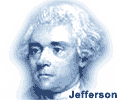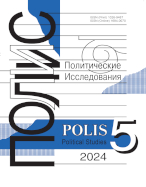The Debates about “Great Debates”:
How to Structure the Theory of International Relations
Alekseyeva T.A.,
Prof., Head of Political Theory Department, Moscow State Institute of International Relations (University), MFA of Russia. Moscow, Russia, ataleks@mail.ru
elibrary_id: 1361 |
DOI: 10.17976/jpps/2016.06.02
Alekseyeva T.A. The Debates about “Great Debates”: How to Structure the Theory of International Relations – Polis. Political Studies. 2016. No. 6. https://doi.org/10.17976/jpps/2016.06.02
The article is devoted to the recent discussions among international studies scholars about the canonic interpretation of the history of formation and development of the theory of international relations through so called “Great Debates”. By now there is good evidence that they were nothing more than “semi-myth”; at best it is a way to structure the discipline, which has sufficient faults. According to the author, there are possibilities for fuller structuring of the subject with pedagogical purposes as well. The author discusses the key “flashpoints” in the current debate about the “Great Debates”, also in the perspective of the history of the concept. It is emphasized that the author does not object to the use of the term as a tool to explain the differences in the polar positions, but considers it inappropriate to artificially make absolute the extreme points of view. On the contrary, it is suggested to consider other possible options for structuring the object, also for training purposes. The problem of interaction of theories within the international relations discipline is analyzed through the prism of the history of international political thought. Shown are the “reference points” of institutionalization of international relations theory as an independent discipline, the evolution of approaches to structuring of the discipline, as well as corresponding criticism (of the “traditional”, “paradigm”, “contextual” and other approaches). Particular attention is paid to the history of the collision of two theoretical and international approaches – “realism” and “idealism”, its discursive and theoretical content, the problem of the differences and interactions between “idealism” and “realism”, the specifics of the image of “idealist” as “the Other”.
See also:
Konyshev V.N., Sergunin A.A.,
International relations theory: on the threshold of new «Great Debates»?. – Polis. Political Studies. 2013. No2
Konyshev V.N., Sergunin A.A.,
“The Great Debates”: The Means of Structuring or Periodization of International Relations Theory?. – Polis. Political Studies. 2017. No4
Alekseyeva T.A., Lebedeva M.M.,
What Is Happening to the Theory of International Relations. – Polis. Political Studies. 2016. No1
Safronova O.V., Korshunov D.S.,
«New» or «Old» great debates?. – Polis. Political Studies. 2013. No4
Pavlova E.B., Romanova T.A.,
Debates in International Relations Theory: Rethinking Interdisciplinarity. – Polis. Political Studies. 2019. No2





.jpg)






 print
print
.jpg)
.jpg)